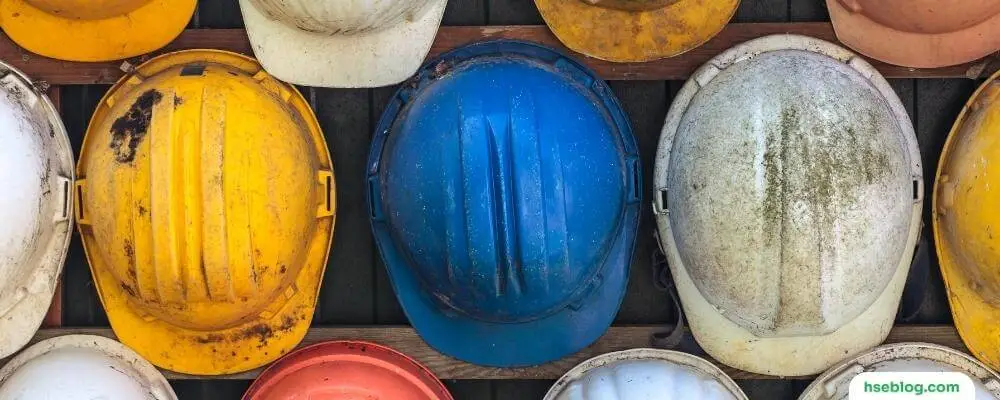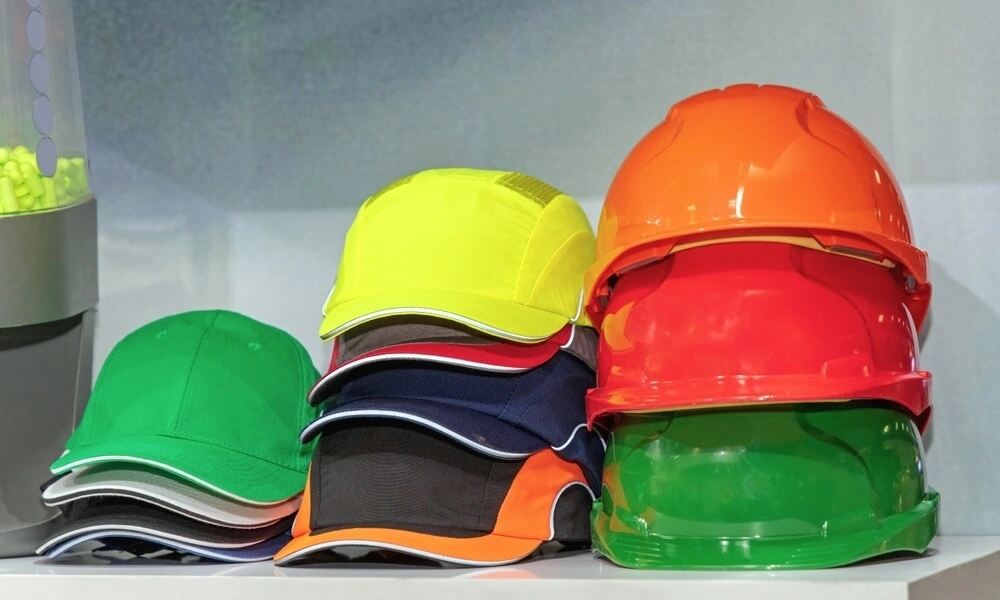If you work in a construction or industrial setting, you know the importance of wearing head protection. Many types of head protection are available on the market, but what is the difference between bump caps and hard hats? In this blog post, we will discuss the differences between bump caps and hard hats and help you decide which type of head protection is right for you!
When choosing head protection, it is important to consider the type of work you will be doing. Always choose a hard hat if you work in a construction or industrial setting. For other settings, a bump cap may be sufficient. Be sure to select the head protection that is right for you and your work environment!
What is Bump Cap?
A bump cap is a type of headgear typically used in work environments where there is a risk of head injuries from falling objects or bumping into objects. Bump caps are not designed to protect against impact forces as much as they are designed to protect against abrasions, cuts, and scrapes. They are usually made from soft materials such as foam or fabric and often have a visor to protect the face from debris. Bump caps are typically worn with other types of personal protective equipment (PPE), such as hard hats or safety glasses.
Several types of bump caps are available on the market and vary in features and price. Some bump caps have built-in lighting, while others have reflective strips to increase visibility in low-light conditions. There are also bump caps with a chin strap to prevent them from falling off during use.
What Are Bump Caps Used For?
Bump caps are most commonly used in industrial and construction settings, as they offer protection from minor bumps, scrapes, and bruises. They are also used in food service and other industries with a risk of head injuries from falling objects. Bump caps are typically made of high-density polyethylene or tough plastic and fit snugly over the top of the head.
While bump caps offer some protection, they are not meant to be used in lieu of hard hats. Hard hats must be worn in construction zones and other areas with a risk of serious head injuries. Bump caps should only be used in environments where the risks are relatively low.

Bump Cap Vs. Hard Hat – What’s The Difference
The main difference between a bump cap and a hard hat lies in the level of protection they offer and the type of hazards they are designed to mitigate. Here are the key distinctions:
| Aspects | Bump Cap | Hard Hat |
|---|---|---|
| Purpose | Protection against minor bumps, scrapes, and abrasions | Protection against falling objects, impact forces, and penetration |
| Material | Lightweight materials like plastic or foam | Sturdier materials like polycarbonate or fiberglass |
| Level of Protection | Low-impact protection | High-impact protection |
| Compliance with Standards | Complies with standards specific to headgear for protection against minor impacts, such as BS EN 812:2012 | Complies with safety standards such as ANSI/ISEA Z89.1 (USA) or EN 397 (Europe) |
| Weight | Lighter | Heavier |
| Durability | Shorter lifespan | Longer lifespan with proper care |
| Visibility Features | Some models have reflective strips or built-in lighting | Typically do not have built-in reflective elements or lighting |
| Work Environment | Low-risk environments | High-risk environments |
| Electrical Insulation | Not designed for electrical insulation | Some models offer electrical insulation properties (e.g., Class E or Class G hard hats) |
| Cost | More affordable | Generally more expensive |

Purpose and Level of Protection:
- Bump Cap: A bump cap is primarily designed to provide protection against minor bumps, scrapes, and abrasions. It is not intended to protect against significant impact forces or falling objects. Bump caps are typically made from lightweight materials such as plastic or foam.
- Hard Hat: A hard hat, on the other hand, is specifically engineered to offer higher levels of protection, particularly against more serious hazards. It safeguards the wearer from falling objects, impact forces, and penetration. Hard hats are constructed using sturdier materials like polycarbonate or fiberglass.
Construction and Design:
- Bump Cap: Bump caps are typically made of soft materials such as foam or fabric, providing a comfortable fit for the wearer. They often feature a rigid internal shell for added protection against minor impacts. Bump caps may also incorporate a visor to shield the face from debris.
- Hard Hat: Hard hats have a rigid outer shell that can withstand significant force. They usually have an adjustable suspension system to provide a secure and comfortable fit. Hard hats often include features like a brim to protect against sunlight, rain, or falling objects, and they can accommodate additional accessories like face shields and earmuffs.
Work Environment and Compliance:
- Bump Cap: Bump caps are typically used in work environments with relatively low risk of head injuries, such as in certain industrial settings or food service industries. They are not a substitute for hard hats and should only be used with minimal risks. Bump caps generally comply with standards specific to headgear for protection against minor impacts, such as BS EN 812:2012.
- Hard Hat: Hard hats are mandatory in high-risk work environments, including construction sites, industrial settings, and other areas with a risk of falling objects or substantial impact hazards. They comply with safety standards such as ANSI/ISEA Z89.1 (USA) or EN 397 (Europe) to ensure the required level of protection.
Weight and Comfort:
- Bump Cap: Bump caps are generally lighter than hard hats, making them more comfortable to wear for extended periods. The lightweight design reduces strain on the neck and head.
- Hard Hat: Hard hats are heavier due to their construction and materials. While advancements have improved comfort, wearing a hard hat for long durations may cause discomfort or fatigue.

Visibility:
- Bump Cap: Some bump caps have reflective strips or built-in lighting to enhance visibility in low-light conditions. This can be advantageous in work environments where visibility is important for safety.
- Hard Hat: Hard hats usually don’t have built-in reflective elements or lighting, although additional accessories like reflective stickers can be applied for increased visibility.
Lifespan and Durability:
- Bump Cap: Bump caps typically have a shorter lifespan than hard hats. The soft materials used in construction may wear out or deteriorate over time, especially with frequent use.
- Hard Hat: Hard hats are designed to be more durable and long-lasting. With proper care and regular inspection, hard hats can endure for several years, providing consistent protection.
Compliance with Standards:
- Bump Cap: Bump caps usually comply with standards specific to headgear designed for protection against minor impacts, such as BS EN 812:2012. These standards focus on providing a basic level of protection for low-risk environments.
- Hard Hat: Hard hats adhere to more stringent safety standards such as ANSI/ISEA Z89.1 (USA) or EN 397 (Europe), which require rigorous testing to ensure resistance against various impact forces and penetration.
Remember, assessing your work environment’s specific hazards and safety requirements is essential to determine which type of head protection is appropriate. Always prioritize safety and follow the regulations and guidelines set forth by your industry or employer.

Bump Caps Benefits To The Wearer
Some might think that bump caps are only worn by construction workers, but that is untrue. Many different types of jobs require a bump cap, and there are many different benefits to wearing one. Here are just a few of the benefits that you can enjoy when you wear a bump cap:
- Protection from minor bumps and bruises: If you work in a job that requires you to be around moving machinery or in tight spaces, then a bump cap can protect you from minor bumps and bruises.
- Reduced risk of serious injury: While a bump cap will not protect you from all injuries, it can help to reduce the risk of serious injury.
- Improved visibility: Bump caps often have reflective material, which can help improve your visibility in low-light conditions.
- Comfort: Bump caps are usually made from comfortable materials, so you can wear them for long periods of time without feeling uncomfortable.
If you work in a job that requires you to be around moving machinery or in tight spaces, then a bump cap can protect you from minor bumps and bruises. Bump caps are usually made from comfortable materials, so you can wear them for long periods of time without feeling uncomfortable. If you are looking for a way to improve your safety at work, then consider wearing a bump cap.

Hard Hats Benefits To The Wearer
Hard hats offer several benefits to the wearer, particularly in high-risk work environments. Here are some of the key advantages of wearing a hard hat:
- Protection against Falling Objects: One of the primary benefits of a hard hat is its ability to protect the wearer from falling objects. Construction sites, industrial settings, and other workplaces often involve overhead hazards where tools, equipment, or debris may fall. A hard hat’s rigid outer shell can help mitigate the impact and reduce the risk of head injuries.
- Impact Resistance: Hard hats are designed to withstand significant impact forces. They protect against blows, bumps, or collisions with stationary objects. The hard shell absorbs and distributes the force of an impact, reducing the likelihood of severe head trauma.
- Penetration Protection: In certain work environments, there may be a risk of objects or materials penetrating the headgear. Hard hats offer resistance against sharp objects, like nails or screws, that may fall or be propelled with force. The durable materials used in hard hats help prevent penetration and potential head injuries.
- Electrical Insulation: Some hard hats are specifically designed to provide electrical insulation. These hard hats, Class E or Class G, protect against electrical shocks and arc flashes. They are essential in occupations that involve electrical work or exposure to live wires.
- Visibility Enhancements: Hard hats often have accessories or features that enhance visibility. For example, they may have reflective strips or high-visibility colors to improve the wearer’s visibility in low-light or busy worksites. This helps others identify and locate workers, reducing the risk of accidents.
- Comfort and Fit: Hard hats are designed with adjustable suspension systems for a secure and comfortable fit. They distribute the weight evenly across the head, minimizing discomfort during extended periods of wear. Some models may include additional padding or ventilation systems to enhance comfort.
- Compliance with Safety Standards: Hard hats are subject to safety standards and regulations to ensure their effectiveness. By wearing a compliant hard hat, workers can have confidence that they are using protective headgear that meets established safety requirements and provides a certain level of protection.
Remember, wearing a properly fitting and well-maintained hard hat that meets the applicable safety standards for your work environment is crucial. Regular inspection, replacement of damaged hard hats, and adherence to safety guidelines are essential to maximize the benefits of wearing a hard hat.
Conclusion
In conclusion, a bump cap is a type of headgear designed to protect against minor bumps, scrapes, and abrasions in low-risk work environments. It is typically made of lightweight materials like plastic or foam and offers a comfortable fit. However, it should not be used as a substitute for a hard hat in high-risk settings. On the other hand, hard hats provide higher levels of protection against falling objects, impact forces, and penetration. They are constructed with sturdier materials and comply with stricter safety standards. When choosing between a bump cap and a hard hat, it is essential to consider the level of protection needed for the specific work environment and prioritize safety accordingly.

